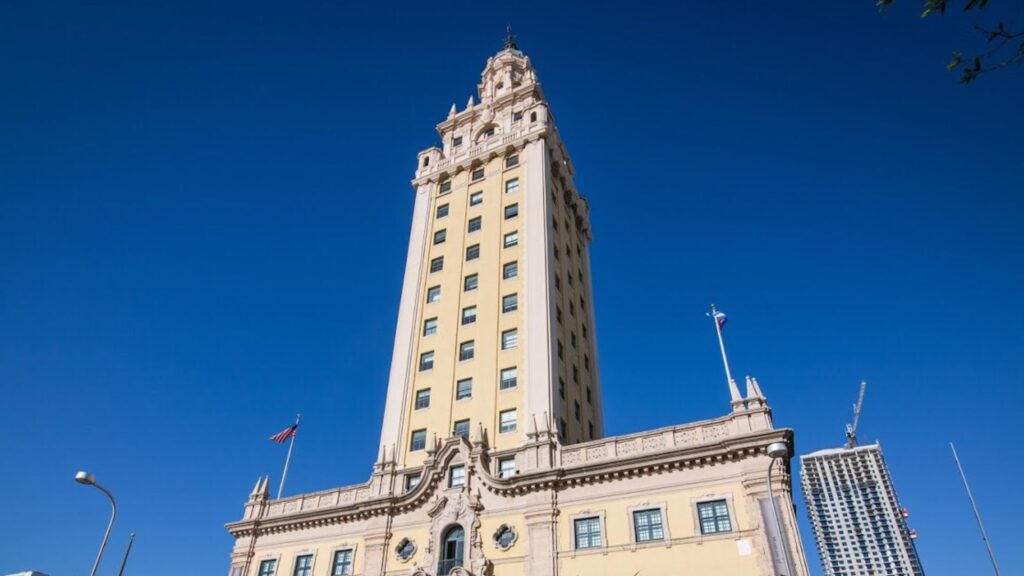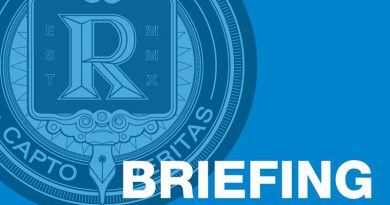Museum Of Art And Design Collecting Freedom Tower Testimonials
Juan Antonio González remembers when the Freedom Tower was known as el refugio—a Cuban refugee assistance center.
In 1969, a decade after his family’s dairy business was seized by Fidel Castro’s communist regime, his family immigrated to Miami, where they lived in a two-bedroom house with two other families.
To offset expenses, they visited the Freedom Tower to get food and medical care.
The then 13-year-old recalls shuffling through the dark, musty building, climbing down industrial-like stairs and waiting in line to receive la caja del refugio, which contained mystery meat, powdered milk, peanut butter, a block of cheese and a bottle of corn syrup.
“It was the beginning of the González family as Cuban-American,” said González, now 67. “It was Mecca. It was magical. It was somewhere over the rainbow. It was all those cliches that we came to know once we mainstreamed in the United States.”
The González family story is one of dozens being collected by Miami Dade College’s Museum of Art and Design’s Centennial Stories project, an initiative gathering intimate audio/video memories of the Freedom Tower in anticipation of its centennial in 2025.
“The Freedom Tower is perhaps the most iconic building in Miami,” said María Carla Chicuén, the executive director of cultural affairs at MDC. “It is a historical landmark and understanding and learning about these stories is key to appreciating our shared history.”
Construction was funded in 1925 by former Ohio governor James Middleton Cox to house the Miami Daily News and Metropolis, later known as the Miami News.
Architecturally, the building parallels a Spanish Cathedral; its 289-foot height made it the tallest structure in the south at the time it was built.
During the 1960s, it became known as el refugio, offering assistance to thousands of Cuban immigrants fleeing the communist revolution.
Currently, the Freedom Tower, which was established as a National Historic Landmark in 2008, is home to MOAD and the offices of the College’s Cultural Affairs Department, Miami Book Fair, Miami Film Festival and Live Arts Miami.
It was closed last May to undergo a $26 million renovation and is anticipated to reopen in July of 2025, according to MOAD executive director Amy Galpin.
The revamped building will feature three main exhibitions: a two-floor showcase chronicling the Tower’s history, a contemporary art exhibit honoring Cuban-American artist Félix González-Torres and North America’s first-ever FIFA exhibit.
Centennial Stories will augment the museum’s chapter on el refugio. So far, approximately 20-30 testimonials have been collected, each averaging about an hour.
The stories will be played audibly on directional speakers to guide people through the multimedia presentation. It will feature photographs, videos and artifacts such as passports, letters and a recipe booklet created with food items offered at el refugio.
Full-length testimonies and transcripts will be available in the College Archives and on Bloomberg Connects, a free app that provides guides to museum exhibitions.
“It’s important to hear directly from people—to create a historical record that reflects myriad voices,” Galpin said. “Honoring people’s individual experiences and learning about their personal journeys [is] essential to our shared humanity.”
Some stories have been recorded in the podcast room at West Campus, while others have been filmed at North Campus’ MDC-TV studio and Wolfson Campus’ Tuyo restaurant, which has a view of the Freedom Tower.
“What I have found is that even though something happened over 60 years ago, these memories are still very real and very present and very emotional,” said MDC archivist René Ramos, who is conducting the interviews for the testimonial project. “In some cases it seems like the memories have only become stronger and more emotional for people.”
Zoila De Yurre Fatemian, the director of Learning Resources at Wolfson Campus, remembers going to the Tower when she was seven years old with her father, Victor, who volunteered as a translator and guide.
“[The Freedom Tower] is part of history. It’s part of the culture here in Miami. It was a significant time, a defining time [where] so many people changed their lives,” said De Yurre, who gave her testimonial in March. “[Knowing] that I was part of that, even helping to put a piece of cheese in a box, it’s a good feeling.”
Testimonials, which will be edited by Local Projects, an exhibition design and consulting company, are being collected through the end of June. To share your story, contact Giovanny Marin at (305) 237-3643 or at gmarin1@mdc.edu or at freedomtower@mdc.edu.
Click here to subscribe to our bi-weekly newsletter, The Hammerhead. For news tips, contact us at mdc.thereporter@gmail.com.



